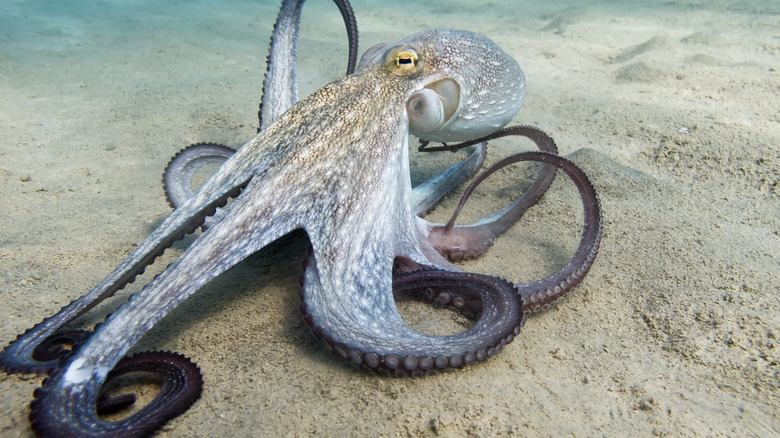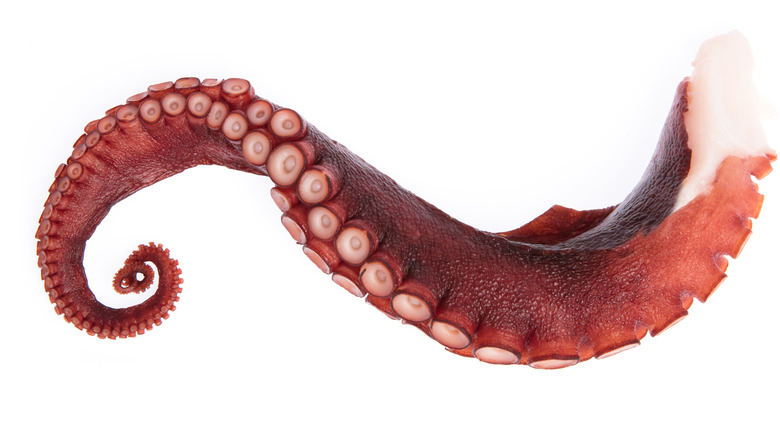Here's How An Octopus Regrows Its Arms
Octopuses are fascinating creatures that are incredibly intelligent. According to Smithsonian Magazine, they have 130 million neurons, and most are located in their eight arms. Moreover, they can navigate through mazes, solve problems, and remember solutions (per Scientific American). Besides their intellectual properties, octopuses are also physically distinct. They have three hearts, two of which move blood beyond their gills, and the other keeps blood circulating for organs.
Interestingly, octopuses have no skeletal structure (via Mental Floss). Their arms consist of a nerve cord and three muscle bundles. They can lose one of their arms due to injury, predators, and at times, self-cannibalization. Generally, this can be painful for the octopus. However, as soon as the arm or limb is damaged, a regrowth process begins, creating an arm that is as good as new (via Scientific American).
Sounds crazy? Well, it gets even crazier. Scientists have found that severed octopus arms have a mind of their own. They can react up to an hour after being chopped off. In addition, if given food, it will try to feed a phantom mouth. That being said, how does an octopus's arm grow back so seamlessly?
The regrowth process is intricate
Per Mental Floss, when an octopus loses an arm, everything, including nerve bundles and suckers, grow back. This is due to a process called morphallaxis, where tissue is rearranged to allow for the growth of new tissue. In other words, instead of a scar forming, cells take over the wound and divide, causing regeneration. A specific protein called AChE, also has an important role (via Scientific American).
In a 2013 study, a small tip of an octopus's arm was amputated and observed. A few weeks after the amputation, scientists found that AChE levels in the octopus were at an all-time high as the suckers formed. When the arm was fully restored, the levels of AChE dropped back to normal, per the Journal of Experimental Marine Biology and Ecology.
Once the arm grows, it can fully function and reach full size with no negative effects toward the octopus. As for the timeline of the process, it takes three days for cells to cover the wound and create a hook-like shape. In two weeks, stem cells and blood vessels are formed and in a total of 130 days (approximately four months), the octopus has itself a new arm.
Scientists hope to understand AChe's role in the regeneration process even more. For now, the mystery is unsolved but perhaps one day, it could revolutionize regenerative medicine and lead to human limb regeneration (via Smithsonian Magazine).

